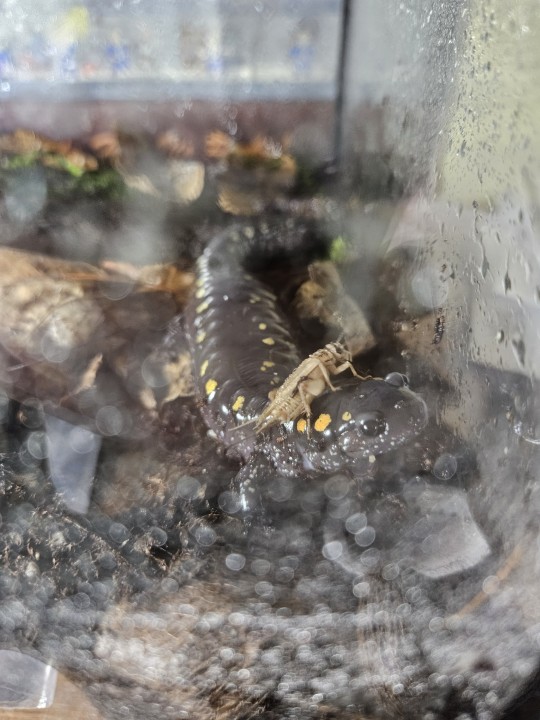#ambystoma maculatum
Text


Piebald spotted salamander (Ambystoma maculatum) [x]
10K notes
·
View notes
Text
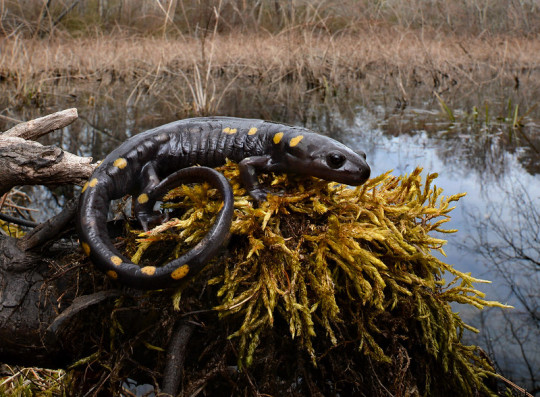
A spotted salamander (Ambystoma maculatum) perches on moss in Suffolk County, New York, USA
Alex Roukis
#spotted salamander#salamanders#amphibians#ambystoma maculatum#ambystoma#ambystomatidae#urodela#amphibia#chordata#wildlife: new york#wildlife: usa
2K notes
·
View notes
Text
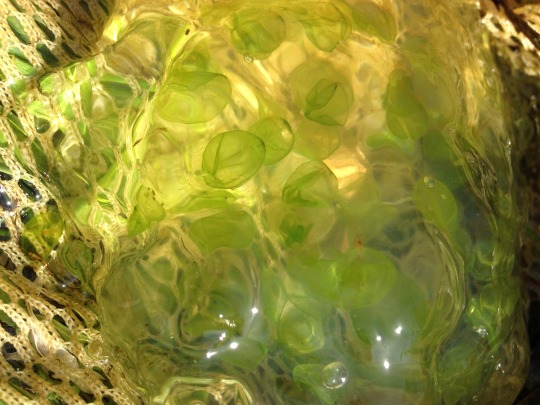
Ambystoma maculatum (spotted salamander) egg masses with algae visible inside the eggs at the University of Mississippi Field Station.
120 notes
·
View notes
Photo

Spotted salamander (Ambystoma maculatum) in Georgia, U.S.
Noah K. Fields
2K notes
·
View notes
Photo
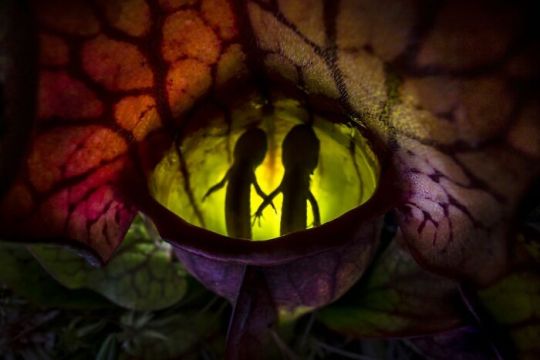
"Nature’s Pitfall"
“Northern Pitcher Plants (Sarracenia purpurea) are carnivorous, allowing them to survive in nutrient-poor bog environments. Here there is no rich soil, but rather a floating mat of Sphagnum moss. Instead of drawing nutrients up through its roots, this plant relies on trapping prey in its specialized bell-shaped leaves, called pitchers. Typically, these plants feast on invertebrates – such as moths and flies – but recently, researchers at the Algonquin Wildlife Research Station discovered a surprising new item on the plant’s menu: juvenile Spotted Salamanders (Ambystoma maculatum).
This population of Northern Pitcher Plants in Algonquin Provincial Park is the first to be found regularly consuming vertebrate prey. For a plant that’s used to capture tiny invertebrate, a juvenile Spotted Salamander is a hefty feast!”
By Samantha Stephens
Close-Up Photographer of the Year Awards
#samantha stephens#photographer#close-up photographer of the year awards#northern pitcher plants#sarracenia purpurea#carnivorous#bog environments#juvenile spotted salamanders#ambystoma maculatum#nature#algonquin wildlife research station#algonquin provincial park
47 notes
·
View notes
Text
went looking in the woods and found a little spotted salamander :-)
#txt#herping#amphibians#salamander#spotted salamander#ambystoma#ambystoma maculatum#(<- assuming i ID'd it properly but. it's hard to misID these guys i think)
33 notes
·
View notes
Text
we found all seven of these under one log

#salamanders#herping#herpetology#plethodontidae#plethodon cinereus#red backed salamander#ambystoma maculatum#spotted salamander
10 notes
·
View notes
Text
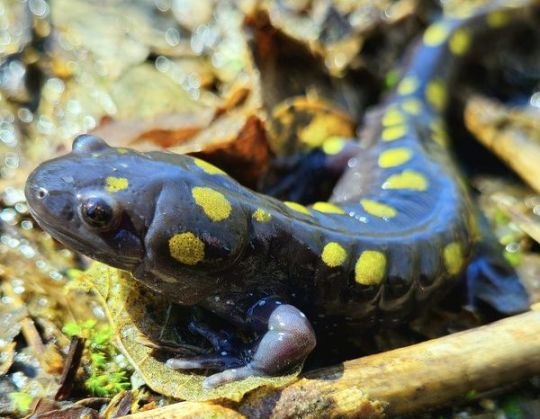


Spotted Salamander (Ambystoma maculatum), family Ambystomatidae, Ohio, USA
photographs by Johnathan Willis
827 notes
·
View notes
Text
In your journey to cultivate yourself as a person, it is of utmost importance to choose your favorite species of mole salamander. You never know when someone will ask, as this question is a common ice-breaker in many social circles. If you don’t already have a favorite Ambystomid salamander in mind, feel free to select one of my favorites for your personal use.
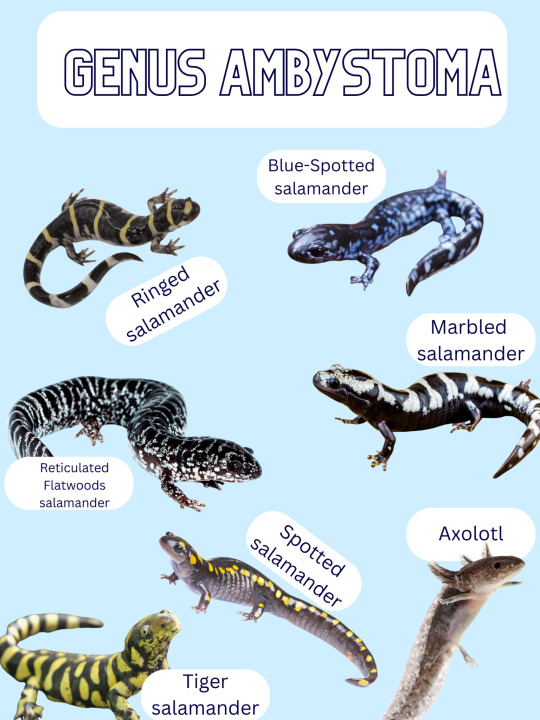
#amphibuary#Ambystoma#polls#salamanders#shitpost#but not really#that’s my little guy representing the tigers 🥰
447 notes
·
View notes
Text
[CM] Amphibians
Amphibians! These words were all very fun to come up with. Who doesn’t like listening to frog sounds? Below we have translations for four frogs, three salamanders, and one fellow with a name from base Clanmew.
Common toad (Bufo bufo) - Amam*
Small and common. Poisonous to eat, but some cats like to chase them anyway.
Spring peeper (Pseudacris crucifer) - Eep
Tiny chorus frog with light peeping calls that are a tell-tale sign of spring. This word is also an unintentional homonym with base Clanmew eep*, which means black rat!
Bullfrog (Lithobates catesbeianus) - Rroak
Large distinct frog with a loud, deep call. A common game among apprentices is ranging up-and-down riverbanks and looking for bullfrogs to startle into the water.
Green frog (Rana clamitans) - Ook
Second-largest frog on ClayClan territory. Green frogs are very territorial - some cats like to watch them wrestle!
Pickerel frog (Lithobates palustris) - Rroo
Heavily spotted frog. Stressed pickerel frogs produce a toxic secretion that makes them poisonous to eat; it may also irritate skin.
Wood frog (Lithobates sylvaticus) - Rrikrrik
Brown-and-black frog. Sometimes found frozen in the dead of winter - cats believe them to be dead during this time, but they actually thaw in the spring!
Spotted salamander (Ambystoma maculatum) - Sslip
Large salamander with distinct yellow spots. Bitter and poisonous, never hunted.
Dusky salamander (Desmognathus fuscus) - Mwip
Mottled and relatively nondescript salamander. Occasionally found foraging in wet shady spots.
Common newt (Lissotriton vulgaris) - Ssliks
Little spotted newt. Found on land most of the year, but move into ponds for the breeding season. Also known as efts; the acolyte Eftrunner’s Claymew name, Sslikspanpean, could also be translated as Newtrunner.
5 notes
·
View notes
Text
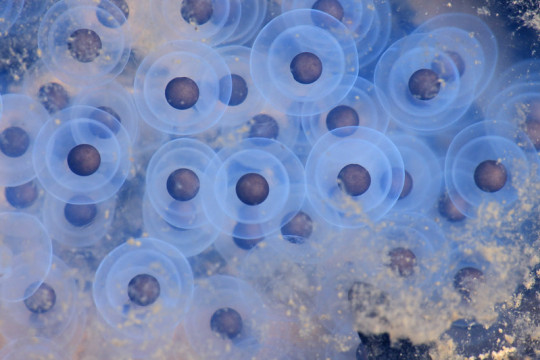
The eggs of a spotted salamander (Ambystoma maculatum) in a pool on Pigeon Mountain, Georgia, USA
by Alan Cressler
#spotted salamander#salamanders#amphibians#ambystoma maculatum#ambystoma#Ambystomatidae#urodela#amphibia#chordata#wildlife: georgia#wildlife: usa#wildlife: north america
190 notes
·
View notes
Photo
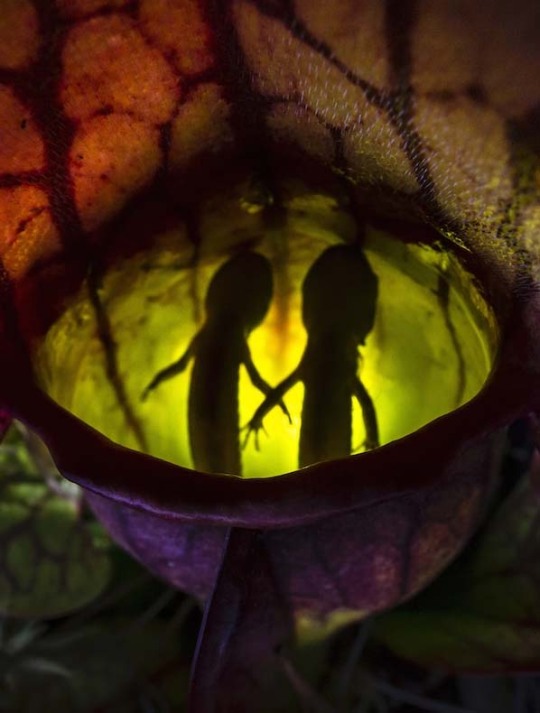

“Nature’s Pitfall” by Samantha Stephens (Canada). Overall winner and Winner Animals.
“Northern Pitcher Plants (Sarracenia purpurea) are carnivorous, allowing them to survive in nutrient-poor bog environments. Here there is no rich soil, but rather a floating mat of Sphagnum moss. Instead of drawing nutrients up through its roots, this plant relies on trapping prey in its specialized bell-shaped leaves, called pitchers. Typically, these plants feast on invertebrates – such as moths and flies – but recently, researchers at the Algonquin Wildlife Research Station discovered a surprising new item on the plant’s menu: juvenile Spotted Salamanders (Ambystoma maculatum).
This population of Northern Pitcher Plants in Algonquin Provincial Park is the first to be found regularly consuming vertebrate prey. Text by My Modern Met
2 notes
·
View notes
Photo

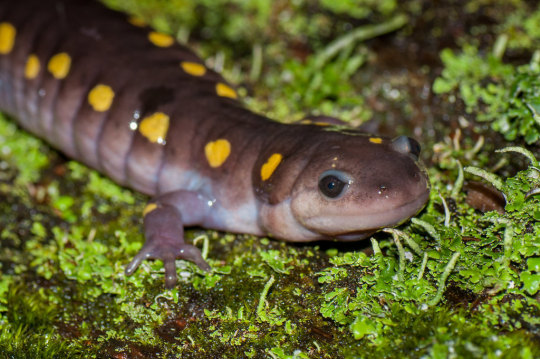
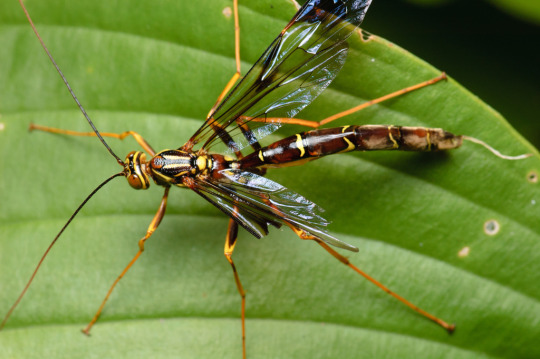
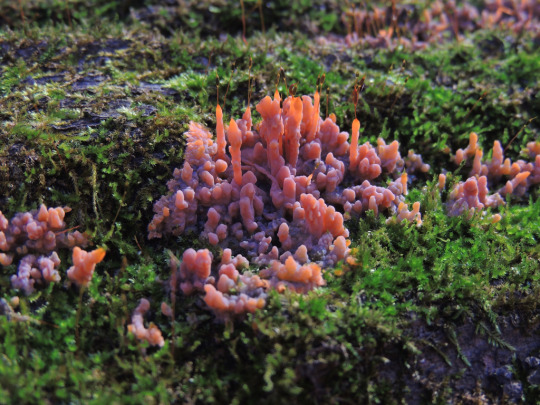


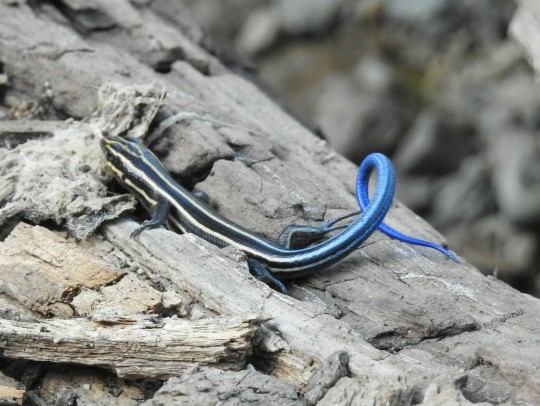

iNat Geo: Ohio Wildlife on iNaturalist
Eastern Screech-Owl (Megascops asio) © Doug D.
[Image 1 Description: An owl sits within a cavity of a grey and white patched tree during daytime. The owl is reddish-brown with a white belly. It has earlike tufts on it’s head. /End ID.]
Spotted Salamander (Ambystoma maculatum) © Steve
[Image 2 Description: A grey-brown salamander has dark eyes and rows of yellow spots down both sides of it’s back. /End ID.]
Megarhyssa macrurus ssp. macrurus © Matt Claghorn
[Image 3 Description: A wasp with long legs, antennae, and abdomen stands on a leaf. The wasp is dark reddish-brown with a few narrow yellow bands on it’s abdomen. /End ID.]
Wrinkled Crust (Phlebia radiata) © Rob Curtis
[Image 4 Description: A purple-tinged orange fungus growing amidst moss. It is bumpy with column-like structures of different heights. The tops of the structures appear more orange. /End ID.]
Eastern Red Bat (Lasiurus borealis) © Joseph Morlan
[Image 5 Description: A red-furred bat rests upside-down under a tree branch during daytime. /End ID.]
Paintedhand Mudbug (Lacunicambarus polychromatus) © Brian Wulker
[Image 6 Description: A greenish crayfish with a darker tail crawls out of the water onto a rock while raising it’s claws. /End ID.]
Common Five-lined Skink (Plestiodon fasciatus) © Donna J. Parry
[Image 7 Description: A black skink with many pale lines down it’s body-length walks on a log and is looping it’s tail. It’s tail transitions to a solid bright blue colour. /End ID.]
Canadian Lily (Lilium canadense) © bendingtree
[Image 8 Description: A close-up of several lily flowers with pink petals. The stems turn down so the flowers face the ground. A person holds one flower to focus on the inside, showing a yellow centre which is speckled with dark red. /End ID.]
iNaturalist is a citizen science project where anyone can upload observations of wildlife, get community identification, or contribute to identification themselves. Your observations contribute research grade records to science! Join to be a part of the global project.
Want to see wildlife from another US state? Request in comments here!
#wildlife#nature#ecology#zoology#ohio#killy killy#iNat Geo#aves#insecta#amphibia#reptilia#fungi#mammalia#crustacea#plantae#wildlife photography#nature photography#birds#birdblr#owls#inaturalist#wasps#herps#herpblr#mushrooms#bats#crayfish#bugs#bugblr
10 notes
·
View notes
Text
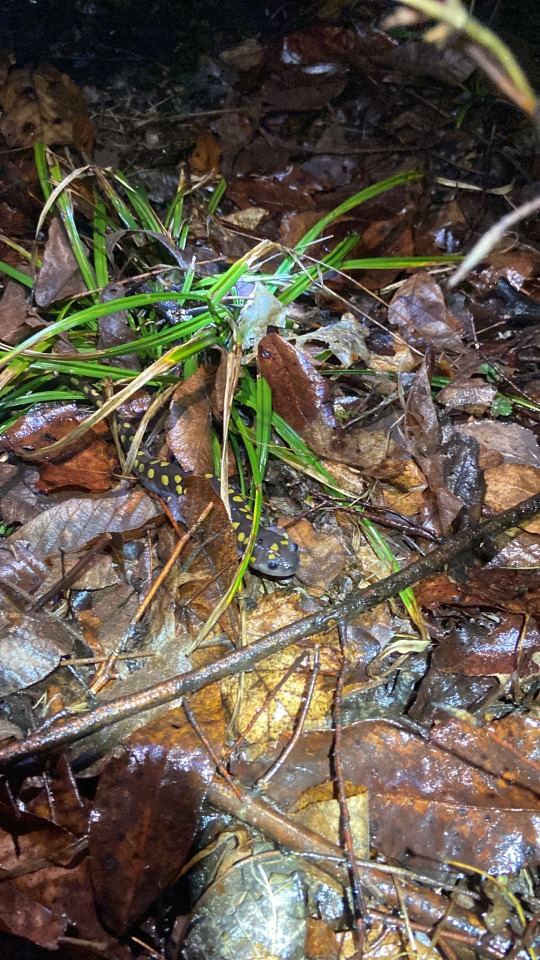
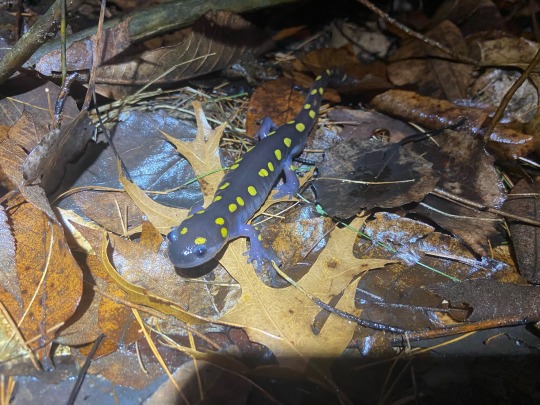
They’re just little dudes
Spotted salamander Ambystoma maculatum
#amphibian#salamander#spotted salamander#dirtcore#gfdelmar og#goblincore#mosscore#mushroomcore#nature
2 notes
·
View notes
